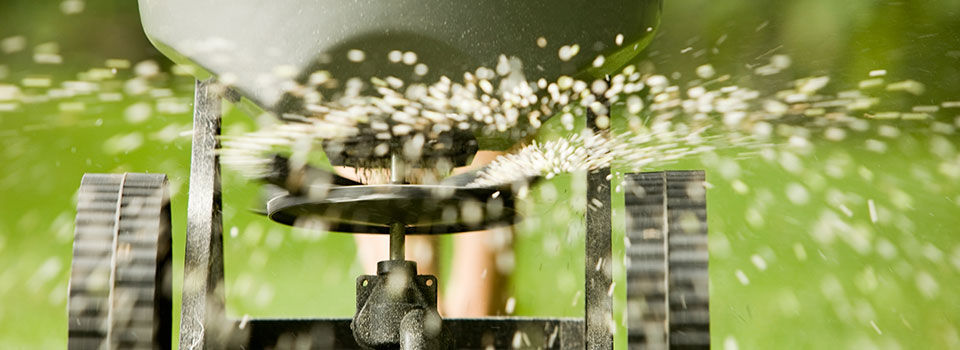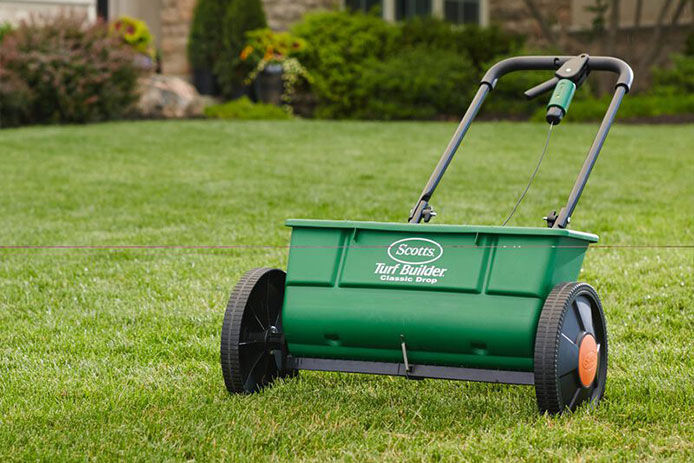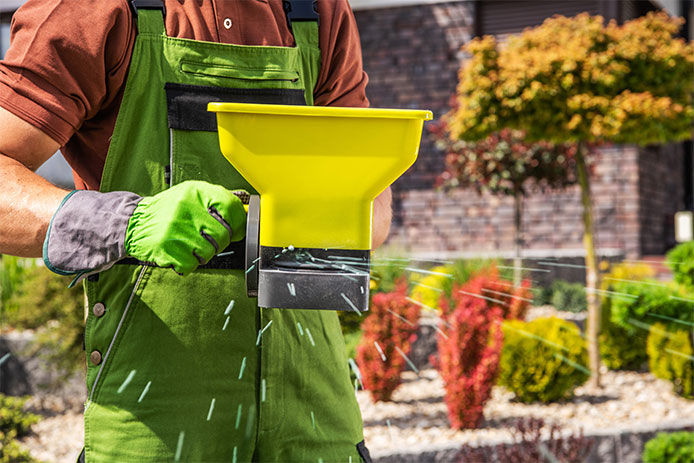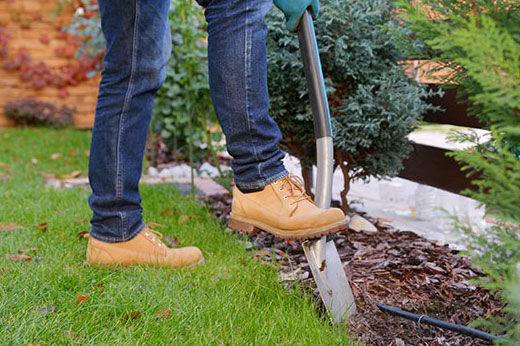Best Fertilizer Spreader for Lawns: Which Option is Right for You?

A critical part of lawn care is fertilizing. If you want to get the lush, green lawn that's the envy of the neighborhood, you’ll need to fertilize it. Fortunately, lawn care is an easy DIY job with a lawn fertilizer spreader.
A lawn spreader helps you distribute that lawn-strengthening, weed-destroying material that makes your grass grow healthy and strong. So, how do you choose the right lawn spreader? Our guide will help you determine the best fertilizer spreader for your applications.
Types of Lawn Spreaders

When it comes to lawn fertilizer spreaders, you have options. Choose from small handheld spreaders and large broadcast spreaders for bigger jobs. It all depends on your yard size, goals, and the type of fertilizer you plan to use.
You can also use fertilizer spreaders to distribute ice melt in the wintertime, making them a great piece of yard equipment to own all year round. If you’re choosing a fertilizer spreader, it’s important to consider all the potential uses.
Here’s a breakdown of the different types of lawn fertilizer spreaders to help you keep your grass green.
Broadcast Fertilizer Spreaders

A broadcast fertilizer spreader “broadcasts” material to the front and sides. These are often small, wheeled machines that are easy to use and easy to store, making them a very convenient and popular option for small and medium-sized yards.
How to Use Broadcast Spreader
When you add the grass food to the broadcast spreader, the material funnels into the machine. As you push the fertilizer spreader forward, the material is dispensed evenly over the ground. You can adjust the rate of product distribution using a dial on the spreader.
Lawn broadcast fertilizer spreaders are often operated manually by pushing them forward, so they don’t require much maintenance or upkeep. You can also find tow-behind varieties that work with a sit-down mower or another ATV.
It’s important to keep the spreader clean after each use and store it in a dry spot in your garage or tool shed. These types of fertilizer spreaders can handle many types of lawn and garden products, including grass seed, lawn food, and weed deterrents. Broadcast spreaders are great for quickly dispensing a large amount of material when precision is not as important.
When to Use a Broadcast Spreader
Use a broadcast fertilizer spreader if you have a medium-to-large lawn and want to quickly distribute lawn food or seed. As long as your yard is fairly open and free of areas that need to be covered precisely, a broadcast spreader is the fastest and most effective way to distribute the material.
Drop Spreaders for Lawns

Drop spreaders are similar to broadcast spreaders in that they can quickly distribute a large amount of material. They also look quite similar since they are small wheeled, manual machines. But because the seed or fertilizer only comes out of the bottom compartment of a drop spreader, it gives you more control over where the material goes. These are ideal for doing smaller spaces, lawn edges, and trim.
Because drop spreaders are more precise with application, spreading the fertilizer, grass food, or other material can take slightly longer. The upside to using a drop spreader is that you won't have to worry about grass seed or fertilizer going into place you don't want it.
How to Use a Drop Spreader
To start, fill the spreader with the fertilizer. Position the spreader at the edge of the lawn area you want to cover, and open the hopper to release the fertilizer as you begin walking. Try to overlap each pass slightly to avoid gaps. After covering the entire lawn, you should water the lawn lightly if recommended to help the product settle into the soil.
When to Use a Drop Fertilizer Spreader
Drop fertilizer spreaders are the best fertilizer spreaders for precision jobs. They're ideally suited for small-to-medium-sized lawns, as they can take a little longer to dispense the seed, fertilizer, or ice melt. Drop fertilizer spreaders are great for well-manicured lawns, trim, and edging.
Use a drop spreader for fertilizer if you need lawn seed or other materials in a particular spot. If you need to avoid flower beds or overlapping on a neighbor's lawn, the precision of a drop spreader is a good lawn and garden tool for the job.
Handheld Fertilizer Spreaders

One of the most popular lawn fertilizer spreader choices is the handheld spreader. The best hand fertilizer spreaders are easy to use, compact, and affordable. These portable handheld spreaders are small broadcast spreaders. They dispense fertilizer, seed, weed control, or ice melt to the front and sides of the spreader as you walk along your yard.
How to Use Handheld Seed Spreader
You operate most handheld spreaders using a dial or crank to control the speed and flow of the material. These offer the cheapest way to spread fertilizer, but they also offer more precision since you manually control the fertilizer dispenser. Hand fertilizer spreaders are best for small yards, gardens, and walkways.
When to Use a Handheld Fertilizer Spreader
Use a handheld fertilizer spreader if you have a small lawn or a compact area to cover with fertilizer, grass seed, ice melt, or other material. Handheld spreaders are the best fertilizer spreaders for small jobs.
The drawback of handheld spreaders is that they are slow and may not distribute materials as evenly as the other types of fertilizer spreaders. However, they are inexpensive, easy to store and require very little upkeep. They are also the best lawn fertilizer spreaders for hard-to-reach spots.
Keep your Lawn Green and Healthy with Do it Best
Keeping a lawn healthy and green requires regular feeding, care, and maintenance. So, if you're wondering how to fertilize your lawn, control weeds, or reseed a few patches, we’ve got the yard and garden supplies you need.
A well-maintained outdoor space lets you entertain, relax, and enjoy time with friends and family. This year, make the most of your yard by getting ahead on lawn maintenance and care.
If you're in need of a lawn spreader to feed your grass, stop by your local Do it Best store for a great selection of lawn supplies and the expert advice you need! We’ll help you grow a lawn you’re proud of!
While do-it-yourself projects can be fun and fulfilling, there is always a potential for personal injury or property damage. We strongly suggest that any project beyond your abilities be left to licensed professionals such as electricians, plumbers, and carpenters. Any action you take upon the information on this website is strictly at your own risk, and we assume no responsibility or liability for the contents of this article.




